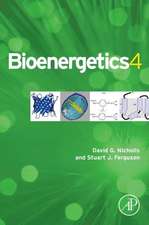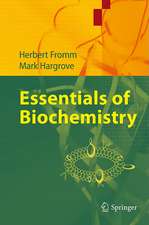Hydrogen Sulfide and its Therapeutic Applications
Editat de Hideo Kimuraen Limba Engleză Hardback – 16 sep 2013
| Toate formatele și edițiile | Preț | Express |
|---|---|---|
| Paperback (1) | 940.87 lei 6-8 săpt. | |
| SPRINGER VIENNA – 22 aug 2016 | 940.87 lei 6-8 săpt. | |
| Hardback (1) | 788.00 lei 38-44 zile | |
| SPRINGER VIENNA – 16 sep 2013 | 788.00 lei 38-44 zile |
Preț: 788.00 lei
Preț vechi: 1036.84 lei
-24% Nou
Puncte Express: 1182
Preț estimativ în valută:
150.79€ • 157.75$ • 125.26£
150.79€ • 157.75$ • 125.26£
Carte tipărită la comandă
Livrare economică 29 martie-04 aprilie
Preluare comenzi: 021 569.72.76
Specificații
ISBN-13: 9783709115497
ISBN-10: 3709115493
Pagini: 400
Ilustrații: IX, 207 p. 39 illus., 23 illus. in color.
Dimensiuni: 155 x 235 x 20 mm
Greutate: 0.48 kg
Ediția:2013
Editura: SPRINGER VIENNA
Colecția Springer
Locul publicării:Vienna, Austria
ISBN-10: 3709115493
Pagini: 400
Ilustrații: IX, 207 p. 39 illus., 23 illus. in color.
Dimensiuni: 155 x 235 x 20 mm
Greutate: 0.48 kg
Ediția:2013
Editura: SPRINGER VIENNA
Colecția Springer
Locul publicării:Vienna, Austria
Public țintă
ResearchCuprins
Biogenesis and Catabolism of Hydrogen Sulfide.- Multiple roles of H2S in inflammation – a new class of therapeutics?.- Hydrogen Sulfide and Oxygen Sensing.- The signal transduction of H2S: identification of the ‘receptor’ for H2S.- Hydrogen sulfide: Physiological and pathophysiological functions.- Therapeutic Applications of Hydrogen Sulfide.- Biological effects of H2S inhalation and its therapeutic potential.- H2S-mediated defense against antibiotics in bacteria.- Modulation of cellular signaling and induction of cytoprotection by hydrogen sulfide.
Textul de pe ultima copertă
The metabolism of sulfur especially by sulfurtransferases had been intensively studied in mid 1900’s. Three enzymes, cystathionine β–synthase (CBS), cystathionine γ–lyase (CSE) and 3-mercaptopyruvate sulfurtransferase (3MST) were found to have the capacity to produce H2S in vitro. However, H2S was recognized simply as a by-product of the metabolic pathways or as a marker for evaluating the activity of enzymes rather than as a physiological active molecule. In the late 1980’s relatively high concentrations of sulfide were measured in the brain that led to the successive studies of identifying the physiological functions of H2S. Recently, the steady-state concentrations of H2S have been re-evaluated and found to be much less than that initially measured. However, despite these differences, such re-evaluations served to further confirm the existence of H2S in mammalian tissues. H2S is produced in almost every organ and plays various roles such as neuromodulation, vasodilation, insulin release, inflammation, angiogenesis and cytoprotection. The unregulated production of H2S and improper responses of target molecules are involved in the pathogenesis of various diseases. This book focuses on these topics as well as on the recent progress in the biology and the therapeutic development of this molecule.
Caracteristici
Gives a broad overview to the topic from chemical and biochemical basics to therapeutic application
First volume on the topic with interdisciplinary scope
Respective topics discussed by experts in basic science and clinical application
Includes supplementary material: sn.pub/extras
First volume on the topic with interdisciplinary scope
Respective topics discussed by experts in basic science and clinical application
Includes supplementary material: sn.pub/extras








